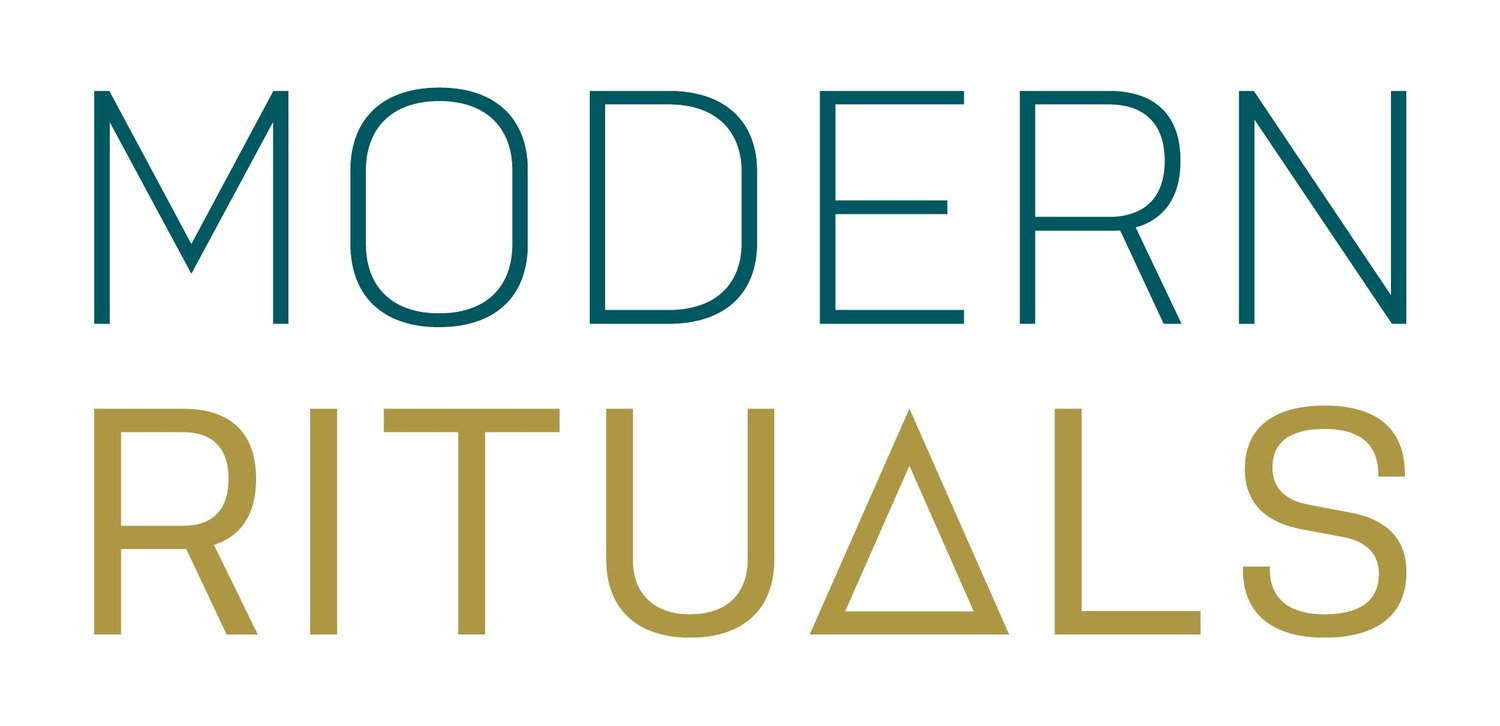Special Elements
Collected from Spain to Japan, these custom elements help you have your day your way.
The rituals can be adapted to suit the range of ceremonies on offer.
If there’s anything more you want, just ask.
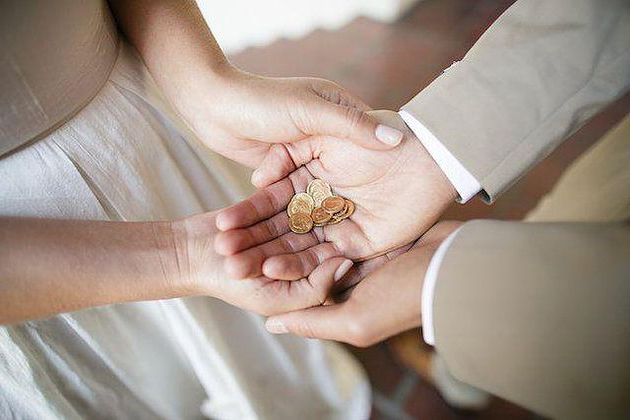
Arras
Used for weddings/commitment ceremonies/renewal of vows.
This tradition emerged in the Roman and Greek cultures where a piece of silver or gold was broken in half whenever an arrabon (pledge) was made.
It has developed over time to become las arras matrimoniales and is often seen in Hispanic weddings today.
The couple share 13 coins known as arras or unity coins, which represent their commitment to sharing the goods they will have in their future together.
The coins are a good luck token to ensure they will never be without money as each coin represents continued prosperity for each month of the year, with a little extra to spare
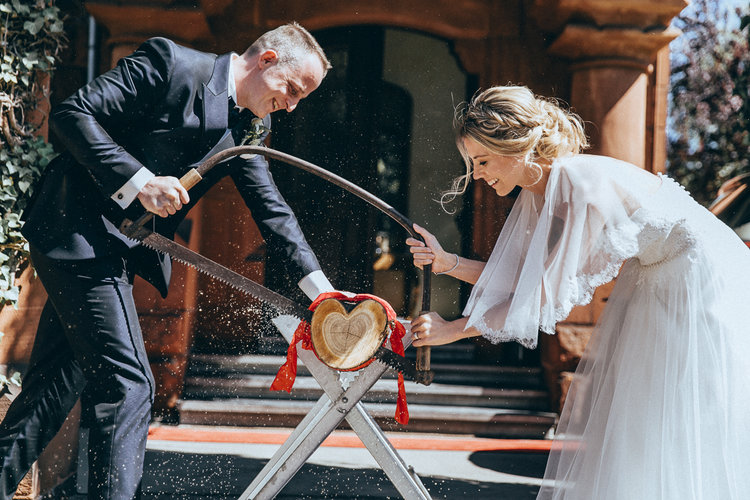
Baumstann Sägen
Used for weddings/commitment ceremonies/renewal of vows.
Baumstann Sägen is a German tradition of a couple sawing a log in two.
The log represents the first obstacle the newlyweds must overcome, in a lifetime of inevitable future obstacles.
With a two-handle long saw, they work as a team (cheered on by their guests) until that log is successfully cut in two.
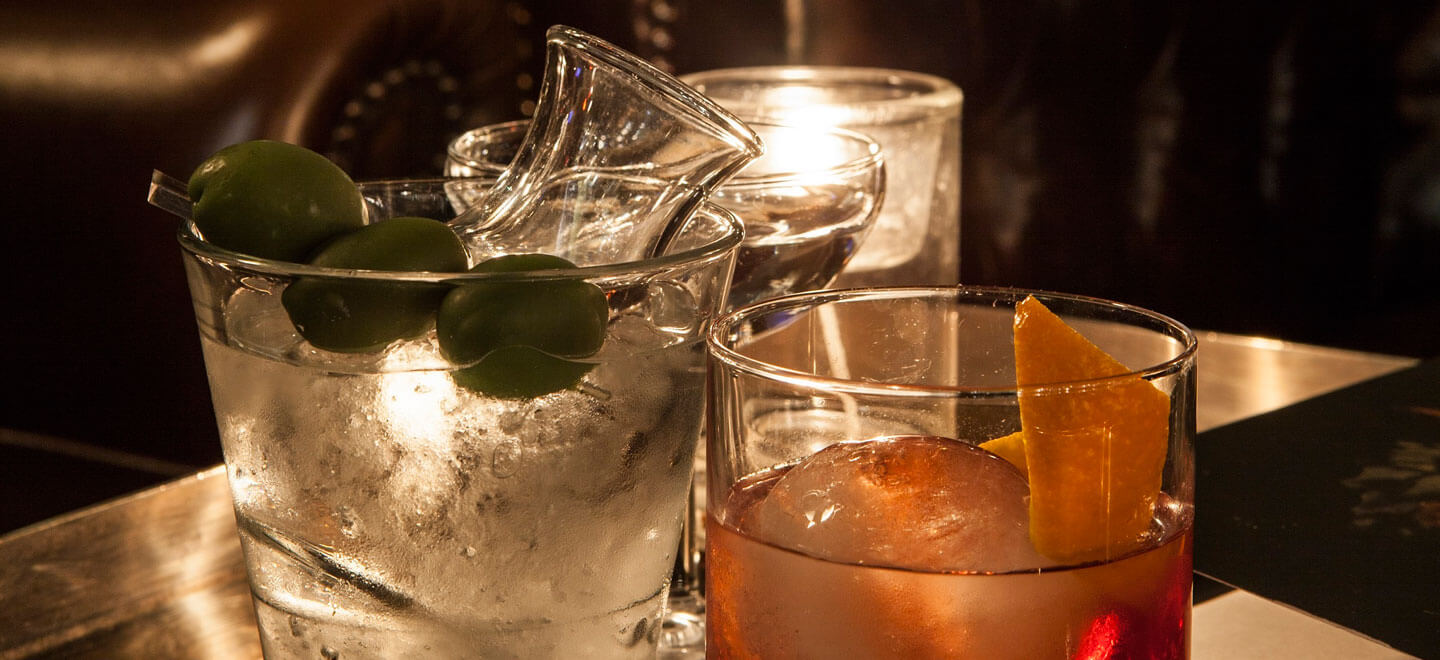
Cocktail Ceremony
Used for weddings/commitment ceremonies/renewal of vows.
Create a signature cocktail that you can make again at home to remember your wedding day.
The couple can make a cocktail for one other or make the same cocktail together and both drink from the one glass which can be kept as a memory of the union.
Choose a drink that reflects your personalities or the season.
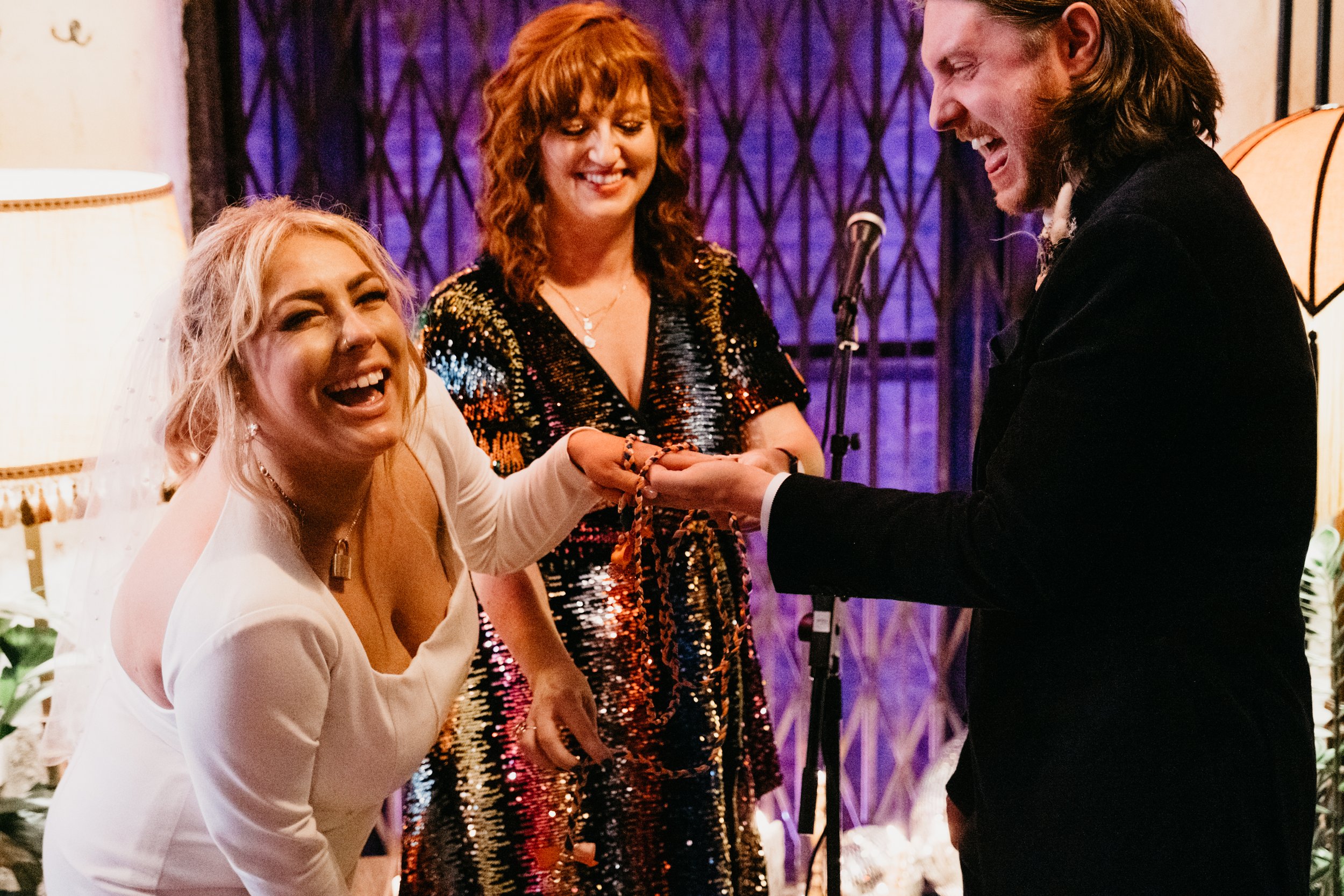
Hand Fasting
Used for weddings/commitment ceremonies/renewal of vows/naming ceremonies.
The original meaning of “tying the knot”.
A tradition where the hands are tied with ribbons or cloth in the shape of the infinity symbol to symbolise the bringing together of the two hearts in a marriage of strength and unity forever.
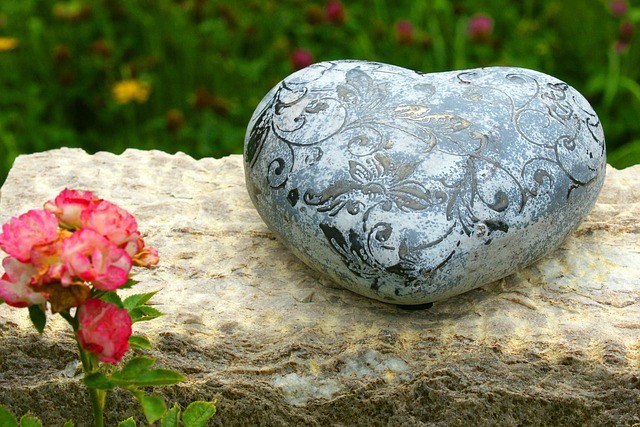
Oathing Stone
Used for weddings/commitment ceremonies/renewal of vows/naming ceremonies.
Oathing Stone is an old Scottish tradition where the Bride and Groom place their hands upon a stone while saying their wedding vows.
Taken from the ancient Celtic custom of setting an oath in stone, inclusion of an Oathing Stone in the vows can be deeply moving.
The Oathing Stone can be engraved with a couple's initials in the middle, accompanied by the date of the wedding.

Quaich
Used for weddings/commitment ceremonies/renewal of vows.
A Quaich ceremony is a traditional Celtic two handled cup.
The Quaich is often referred to as the love cup as you each take a handle to take a drink, showing you trust one another to share the cup.
You can fill the cup with a drink of your choice, usually whisky or you can combine two drinks symbolising the two of you becoming one.
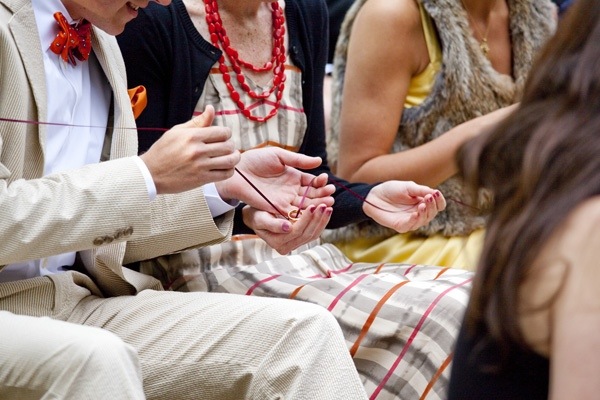
Ring Warming
Used for weddings/commitment ceremonies/renewal of vows.
Having a ring warming ceremony is a perfect way of making all your guests feel included and allows them to actively participate in your wedding day.
It will also add even more meaning to the rings that you and your beloved will wear every day.
The rings are placed inside a little pouch or tied to handkerchiefs and are passed from one guest to the next.
The rings end up back at the front ready to be presented to the couple.
As the rings make their way through the group, each guest takes a quick moment to hold them and imbue them with their love, making a silent wish for the couple and their future before passing them on to the next person.
When these rings return to the couple being wed, they will not only be a gift from one to the other, but will be given with the love, support and wisdom of their family and friends.
There are many different ways to include a ring warming in your ceremony and a wealth of other rituals you may wish you include or adapt to suit.
Rituals evolve and we can create new traditions.
Do your day the way that you want to and create a bespoke ceremony for your celebration.
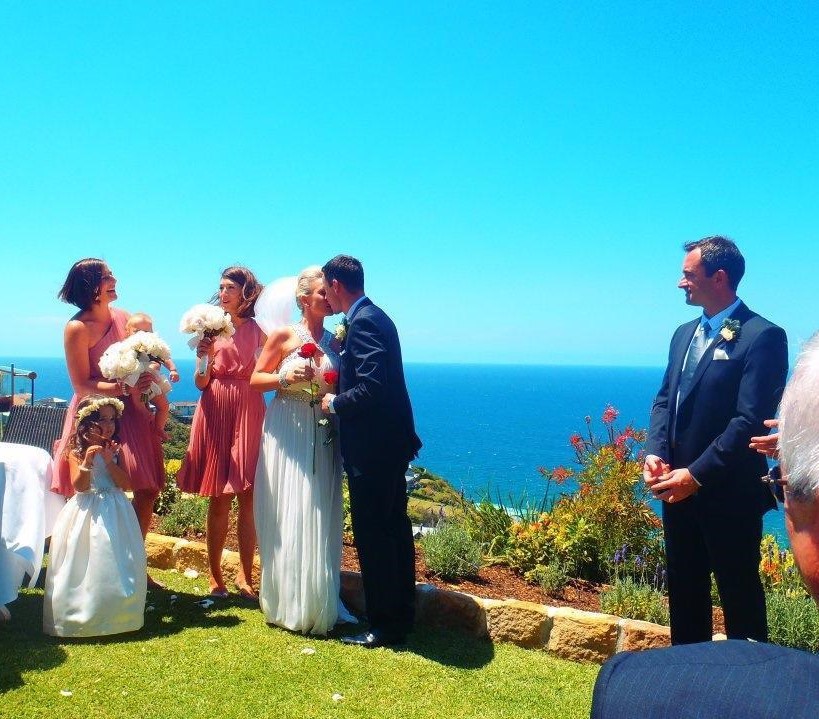
Rose Ceremony
Used for weddings/commitment ceremonies/renewal of vows.
In the Rose Ceremony the couple can choose to present roses to the mothers or grandmothers, as a way of showing appreciation for their support.
Alternatively, the roses, or your other favourites, can be presented as the first gifts that the couple give to each other.

San San Kudo
Used for weddings/commitment ceremonies/renewal of vows.
This is an ancient Japanese ceremony. The ritualised drinking of sake by the couple (and sometimes their parents) serves as a binding ceremony.
There are three sakazuiki (ceremonial sake cups) stacked one on top of the other in a tier. Both partners sip from each cup three times, hence the “three three nine times”.
Three cannot be divided in two, making it a particularly lucky number for a wedding in Japanese culture.
There are different ideas about the symbolism of the three sake cups.
Some believe it represents heaven, earth, and mankind, others believe it represents the love, wisdom, and happiness which grow over time in a marriage.
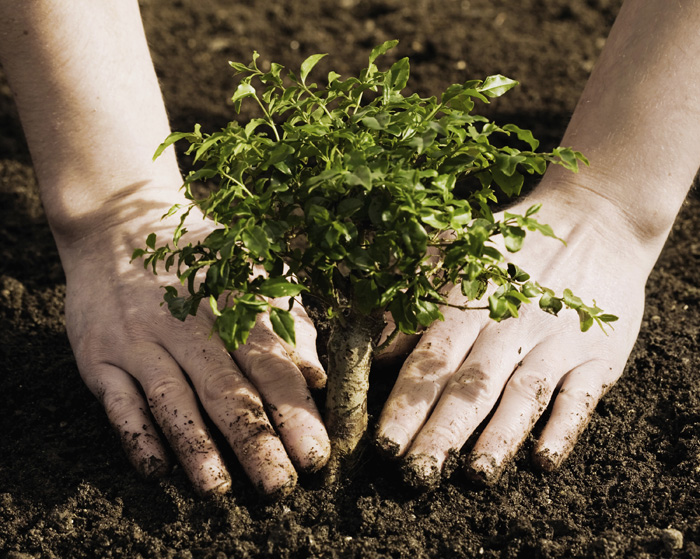
Tree Planting
Used for weddings/commitment ceremonies/renewal of vows/naming and of life celebrations.
The tree planting ceremony can be used to symbolise the joining together of two individuals or the joining of two families.
The tree represents new life and the growth of love.
This ritual can also be used to remember a love one who has passed, the tree becoming a memorial that will grow and endure in their honour.

Unity Candle
Used for weddings/commitment ceremonies/renewal of vows and naming ceremonies.
A traditional ceremony option which holds a universal meaning.
It symbolises the joining of the couple in marriage as well as the joining of their two original families.
The couple’s mothers can light their individual candles for them as a symbol to show that they are moving on from their family to create a new family together.
